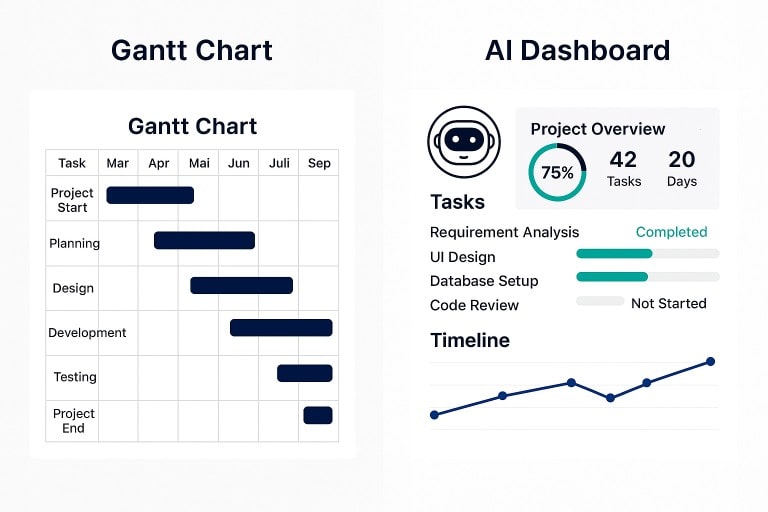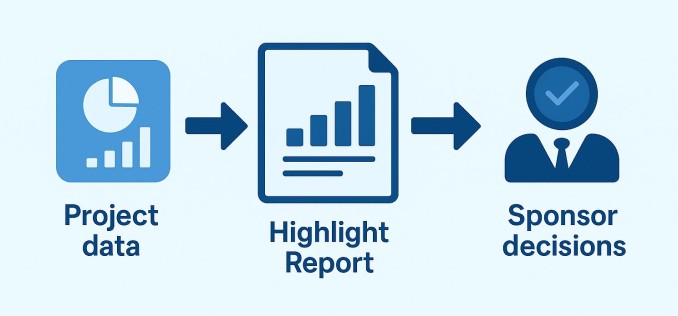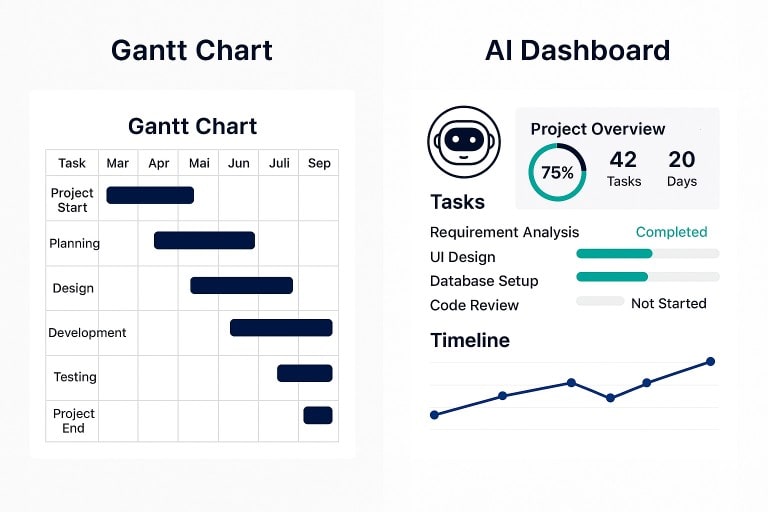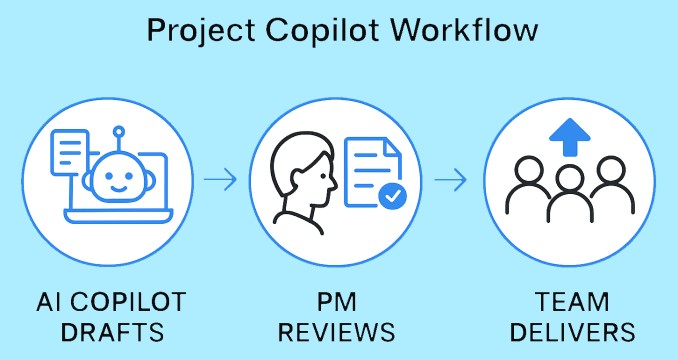
In traditional Waterfall project management methods like PRINCE2, the “Lessons Learned” session has been the formal mechanism for capturing insights. These are usually held at stage boundaries or project closure — often too late to benefit the current project. Agile flips this model on its head. Instead of waiting until the end, teams run retrospectives at the end of every sprint. This rhythm transforms reflection from a one-off report into a continuous improvement engine.
So why do retrospectives deliver real change, when Lessons Learned often become shelfware?
Retrospectives vs. Lessons Learned
- Timing
Retrospectives: Held frequently — usually every sprint (two to four weeks). Insights can be applied immediately.
Lessons Learned: Typically come at the end of a project stage or only at project closure. By then, the learning is too late, and team members may have already moved on.
- Focus
Retrospectives: Practical and actionable. The team agrees on one or two concrete changes to test in the next sprint.
Lessons Learned: Often descriptive — documenting what happened rather than focusing on what to change now.
- Follow-through
Retrospectives: By design, agreed actions flow straight into the backlog, making follow-up unavoidable.
Lessons Learned: Too often captured in a report that is archived, skimmed, or forgotten. Many organisations have libraries of “lessons” that were never implemented.
👉 The cautionary truth: Lessons Learned are only valuable if they drive behaviour. Retrospectives succeed because they embed action into the delivery rhythm.
Why Retrospectives Matter
- Psychological safety: They provide a regular, structured forum where team members can raise issues without fear of blame.
- Continuous feedback: Problems are spotted and addressed early, rather than waiting for a post-mortem.
- Team ownership: Improvements are chosen by the team, not imposed from above, which drives buy-in and accountability.
- Adaptability: They make teams more resilient by institutionalising reflection and adjustment — a critical trait in complex, uncertain projects.
Making Retrospectives Work
- Keep them short and focused — 45–60 minutes is plenty for a two-week sprint.
- Vary the format — don’t just repeat “what went well / what didn’t.” Use creative prompts such as:
- Start / Stop / Continue (simple, clear actions).
- Mad / Sad / Glad (focus on emotional drivers).
- Sailboat (a visual metaphor):
- Project = the sailboat heading for an island (the goal).
- Wind in sails = forces propelling progress.
- Anchors = what’s holding the team back.
- Rocks = risks lurking beneath the surface.
- Sun = positive factors such as morale or culture.
- Keep it focused — aim for one or two concrete improvements, not a laundry list.
- Review last time’s actions — close the loop so improvements stick.
- Make it safe — create an environment where people can speak openly without blame. Facilitators should model openness, listen actively, and frame issues as team challenges, not personal failures.
Why Sponsors and Leaders Should Care
- Fewer repeated mistakes: Problems are corrected mid-flight, not documented after the fact.
- Quicker course correction: Sponsors see earlier signals of risks and blockers.
- Greater predictability: Teams that continually improve reduce delays and firefighting.
- Higher morale: A team that feels heard and empowered is more engaged and productive.
In short, retrospectives improve delivery outcomes and reduce escalation headaches for leadership.
When Retrospectives Don’t Add Value
- Too infrequent — they lose impact if held rarely or only when things go wrong.
- Unstructured — without a clear facilitator or format, they risk becoming a venting session.
- No follow-up — if actions don’t translate into visible change, teams disengage quickly.
Retrospectives as Modern Lessons Learned
For organisations steeped in PRINCE2, the retrospective can be seen as an evolution of Lessons Learned: same intent (capture and apply insight), but with a faster rhythm, tighter feedback loop, and stronger emphasis on implementation.
Where Lessons Learned risk becoming static documents, retrospectives are dynamic and cumulative — each one builds on the last, creating a living culture of continuous improvement.
Takeaway
Retrospectives aren’t just a “nice to have.” They’re a discipline that ensures every sprint contributes not only to the product, but to the team itself. While traditional Lessons Learned remind us to reflect, retrospectives remind us to act.
For project managers moving between Waterfall and Agile contexts, the principle is the same: learning without implementation is wasted. Retrospectives make sure the learning sticks.








